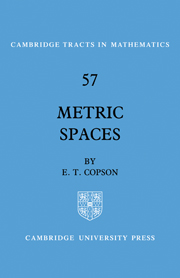Summary
Uniform continuity and the Heine–Borel Theorem
Let f(x) be a real function of the real variable x continuous at each point of the closed interval [a, b]. Then for every positive value of ε and for each point ξ of [a, b], it is possible to find an open interval N(ξ; δ) such that |f(x) – f(ξ)| < ε whenever the point x of [a,b] lies in N(ξ δ); indeed for each ξ there are an infinite number of such open intervals since, if N(ξ; δ1) is one such interval, so also is N(ξ; δ) for every δ < δ1 The infinite family {N(ξ δ):ξ ∈ [a, b]} of all these open intervals corresponding to all the points ξ of [a,b] is called an infinite open covering of [a, b]; every point of [a, b] belongs to at least one open interval of the family.
The Heine–Borel Theorem asserts that, from this infinite open covering of [a, b], we can select a finite number of open intervals of the family, which also covers [a, b]. Every point of [a, b] belongs to at least one of the open intervals of this finite open covering. From this follows the uniform continuity property, that, for every positive value of ∈, there exists a positive number Δ, depending on ∈, such that |f(x1) – f(x2)| < ε whenever the distance between the points x1 and x2 is less than Δ. We return to this in a more general context later.
- Type
- Chapter
- Information
- Metric Spaces , pp. 72 - 84Publisher: Cambridge University PressPrint publication year: 1968

